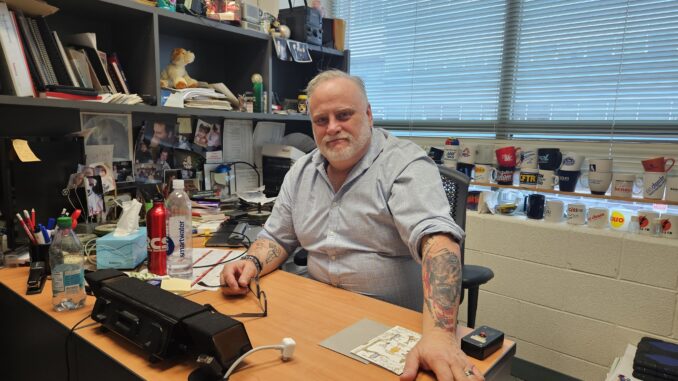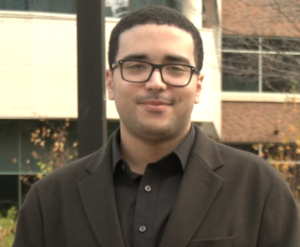
by Terrell Lamb
It only feels like yesterday that I walked down the stage as a Seneca Radio Program graduate, wondering where my new diploma would take me. So, you can guess my bewilderment two years later, sitting down and writing about Seneca’s plans to retool the program, with no new students enrolled in this academic year. It was such a shock that I wanted to sit down with my former, and now retiring professor, Jim Carr, to talk about how we got here and give him a last goodbye.
Carr was the radio program’s Coordinator from 1999 to 2021 and has been with Seneca College for 32 years. He started working in a recording studio and quickly found a love for radio production. Applying to three colleges, he was denied at Humber and Fanshawe before ending up at Seneca’s Broadcasting program. Carr was well-liked for his ability to quickly pick up new technology, and with his work experience, he was soon hired on a part-time basis at the school.

In 1999, Carr was hired full-time. It was a pivotal time for the radio part of the broadcasting program. The Ontario government at the time wanted colleges to split up their programs so the credits could be transferable between schools. Carr was indifferent to the change; “on paper, the idea seemed like it makes sense, but the reality is there are so many different structures of the programs with other colleges, and so it never made it quite as cut and dried to move from place to another.” But overall, the benefits came quickly; “We did certainly start getting more and more applicants that had started at other colleges that came to Seneca for finishing,” Carr notes.
This separation from television and journalism gave Carr the freedom to make the changes he saw as securing the program’s future long-term. Carr notes, “I decided early on that the program needed to focus with radio, but also touch on and talk about other things, and so we introduced courses before any other college introduced courses on new media.” This included blog writing, how to effectively use social media and Photoshop, meaning students’ skills weren’t locked to the control room.
Humber College is closing its radio program. Carr said his heart goes out to all of the affected staff and faculty, having worked closely with them from time to time. But he also brought to my attention that Humber wasn’t the only college to shed its radio program in the last two years; Fanshawe, Algonquin College, Loyalist College, and Mohawk have all suspended their radio broadcasting programs.
Carr thinks the future of the program depends on the industry. “The industry will create the demand, right? And that’s how the colleges have always the adapted, they’ve always tried to wait for industry to come to the table and say ‘Hey, we really need… a student that knows this’ and then the colleges will create a program that teach this, right.”
Ending out our conversation, Carr took the time to tell me how proud he was of how far I’ve come from the radio program into journalism and that he wished me well on my future endeavours. And all I can say to you, Jim, is to Rock on and thank you for everything you taught me.


Be the first to comment